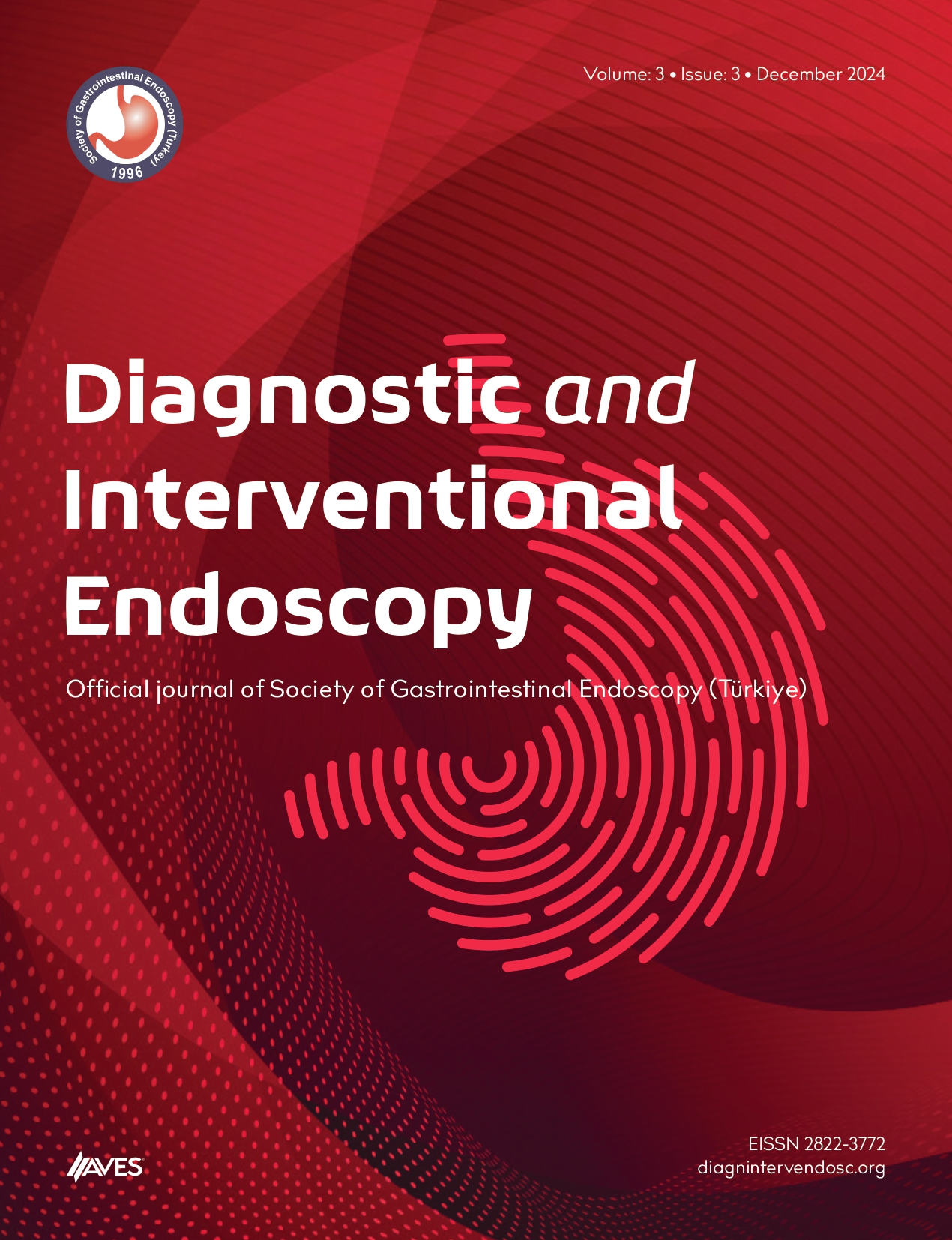Objective: Peroral endoscopic myotomy has been accepted as a new and minimally invasive treatment for primary esophageal motility diseases, esophageal diverticula, and refractory gastroparesis. This study reports the long-term results related to successful outcomes after peroral endoscopic myotomy.
Methods: Patients who underwent peroral endoscopic myotomy for achalasia, esophageal diverticulum, and delayed gastric emptying between January 2018 and March 2022 were included. The data were scanned retrospectively. Gastroscopy, esophagography, and high-resolution manometry were performed on the achalasia patients included in the study. The disorders were classified according to the Chicago classification. 2 of the patients were diagnosed with type III, 6 with type II, and 9 with type I achalasia. The Eckardt score was used to evaluate patients with dysphagia. Peroral endoscopic myotomy with division of septum was performed in 2 patients. Endoscopic pyloromyotomy was performed in 2 patients with a diagnosis of refractory gastroparesis. The refractory gastroparesis patients were diagnosed by preprocedural history, Gastroparesis Cardinal Symptom Index score (>20), physical examination, gastroscopy, abdominal tomography, and solid–liquid gastric excretory scintigraphy.
Results: In patients with achalasia with a follow-up of more than 3 years after peroral endoscopic myotomy, the Eckardt scores improved significantly compared with the preprocedure scores (score of 2.1 ± 1.4 3 years after peroral endoscopic myotomy and 7.1 ± 2.0 before the procedure, P < .001). The 14 (82%) patients with achalasia showed symptomatic improvement according to the Eckardt score after follow-up (Eckardt B3). None of the patients with symptomatic improvement developed symptoms that required reintervention. In 2 patients with esophageal diverticula, there was a decrease in the complaint of food entrapment in the chest. In patients with diverticula with a follow-up of more than 3 years, the Eckardt scores improved significantly from baseline before the procedure (2.4 ± 1.2 preprocedure and 7.3 ± 1.9 at 3 years postprocedure P < .001). One of the 2 patients with refractory gastroparesis had an improvement of >50% in the Gastroparesis Cardinal Symptom Index score. The other patient did not show any symptomatic improvement.
Conclusion: Peroral endoscopic myotomy, peroral endoscopic myotomy with division of septum, and gastric peroral endoscopic myotomy are safe and effective treatment options in patients with achalasia, esophageal diverticulum, and refractory gastroparesis, respectively.
Cite this article as: Bilgiç Y, Ataman E, Orman İ, et al. Clinical results of peroral endoscopic myotomy in patients with achalasia, esophageal diverticular disease, and refractory gastroparesis: A single-center experience. Diagn Interv Endosc. 2022;1(1):12-16.

.png)


.png)